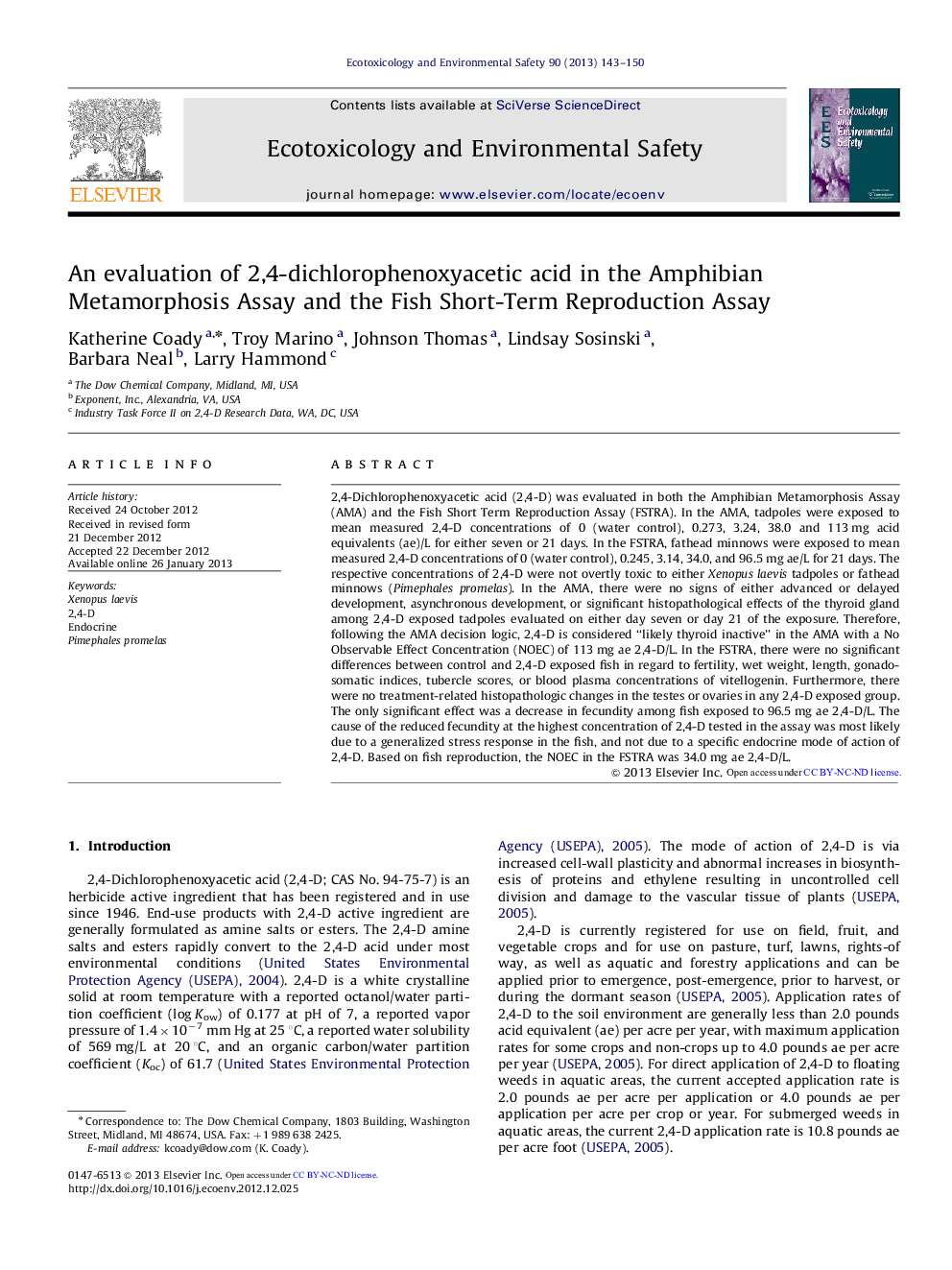| کد مقاله | کد نشریه | سال انتشار | مقاله انگلیسی | نسخه تمام متن |
|---|---|---|---|---|
| 6312443 | 1618973 | 2013 | 8 صفحه PDF | دانلود رایگان |

2,4-Dichlorophenoxyacetic acid (2,4-D) was evaluated in both the Amphibian Metamorphosis Assay (AMA) and the Fish Short Term Reproduction Assay (FSTRA). In the AMA, tadpoles were exposed to mean measured 2,4-D concentrations of 0 (water control), 0.273, 3.24, 38.0 and 113Â mg acid equivalents (ae)/L for either seven or 21 days. In the FSTRA, fathead minnows were exposed to mean measured 2,4-D concentrations of 0 (water control), 0.245, 3.14, 34.0, and 96.5Â mg ae/L for 21 days. The respective concentrations of 2,4-D were not overtly toxic to either Xenopus laevis tadpoles or fathead minnows (Pimephales promelas). In the AMA, there were no signs of either advanced or delayed development, asynchronous development, or significant histopathological effects of the thyroid gland among 2,4-D exposed tadpoles evaluated on either day seven or day 21 of the exposure. Therefore, following the AMA decision logic, 2,4-D is considered “likely thyroid inactive” in the AMA with a No Observable Effect Concentration (NOEC) of 113Â mg ae 2,4-D/L. In the FSTRA, there were no significant differences between control and 2,4-D exposed fish in regard to fertility, wet weight, length, gonado-somatic indices, tubercle scores, or blood plasma concentrations of vitellogenin. Furthermore, there were no treatment-related histopathologic changes in the testes or ovaries in any 2,4-D exposed group. The only significant effect was a decrease in fecundity among fish exposed to 96.5Â mg ae 2,4-D/L. The cause of the reduced fecundity at the highest concentration of 2,4-D tested in the assay was most likely due to a generalized stress response in the fish, and not due to a specific endocrine mode of action of 2,4-D. Based on fish reproduction, the NOEC in the FSTRA was 34.0Â mg ae 2,4-D/L.
⺠2,4-D showed no thyroid activity in the Amphibian Metamorphosis Assay. ⺠2,4-D is likely not active in the androgen, estrogen, or HPG axis of fish. ⺠The NOEC for 2,4-D in the Amphibian Metamorphosis Assay was 113 mg/L. ⺠The NOEC for 2,4-D based on fathead minnow reproduction was 34 mg/L. ⺠The levels of 2,4-D in the environment do not pose a risk to aquatic organisms.
Journal: Ecotoxicology and Environmental Safety - Volume 90, 1 April 2013, Pages 143-150